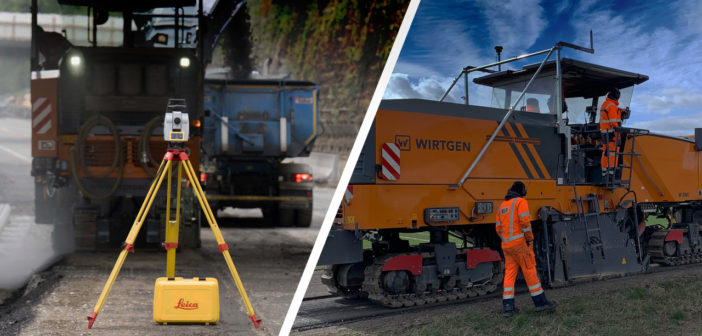Leica Geosystem’s latest app for road renovation – the Leica iCON site milling pilot app – offers entry-level GNSS milling machine guidance to make the re-paving process faster and more accurate. Here we explore how pavement milling solutions have evolved from labour-intensive marks and strings through to the latest automated differential methods. Construction teams now have a choice between digital solutions that use a total station or a GNSS for positioning. We look at the factors to consider when choosing the best solution for a project.
What is milling?
Cold milling (also called cold planing, asphalt milling, or profiling) is the process of removing some or all of the surface of a paved area to create a level foundation on which to place new surface layers. It’s essential to the success of a resurfacing project to get milling right because the quality of the milled surface impacts the quality of the new layers. Roads or other wearing surfaces like airport runways get damaged over time, so resurfacing is a regular maintenance job for highway agencies.
Traditional milling and its limitations
Milling is carried out by a cold planer, also known as a mill, roto-mill, or asphalt milling machine. The operator needs to work to the design for the new surface, removing the right depths in the right places. Traditionally, this is done by following sprayed marks manually laid out by a surveyor. This pre-work is time-consuming and subject to error. To be carried out safely, the road needs to be closed and often the surveyor needs to work at night to minimise disruption. This makes the job difficult, as do weather conditions – spraymarks can get washed away by rain, and wind can make mark-marking inaccurate. Once the design has been marked, it can be difficult for operators to see – it gets hidden by other machinery on-site or might be difficult to read from their machine.
Any inaccuracies lead to the machine operator either taking too much asphalt away (over-cutting), which subsequently means the area will need to be overfilled and the project will be more expensive than it should be, or not taking enough asphalt and the new surface layers being of poorer quality. Another risk, when milling deeper than required, is damaging the structural subbase layers, such as the concrete and the reinforcement elements that would need to be repaired before the re-paving. This can also lead to excessive unnecessary monetary and time costs. Additionally, the drum of the milling machine can be damaged when it would try to mill the reinforcement bars, leading to extra costs and downtime.
Going digital – Leica Geosystems milling solutions
Indicated differential milling pilot
A first step towards a digital, efficient, and controlled milling can be achieved with the Leica iCON site milling pilot application. Utilizing positioning data from a GNSS receiver such as the iCON gps 60 and iCON gps 70 on the machine, the milling pilot calculates the difference between the existing and the design surface as the cold planner moves over the area that is being milled. On the iCON CC80 field controller in the cabin, the iCON site software indicates a two-step preview of set and cross slope values at predicted points, ahead of the current position. As this process is manual, the indicated values must be entered into the machine’s levelling controller by the operator.
Machine control and 3D milling
A more accurate and even faster method of milling is to use a 3D machine control solution, where the cold planer is equipped with machine control technology that controls how much to mill. 3D systems can reproduce road grades and slopes far more accurately, making it easier to achieve complex designs, ultimately improving the smoothness of the final pavement. 3D milling solutions from Leica Geosystems ensure an evenly milled surface, saving time and costly asphalt mix. Leica Geosystems now offers two different methods of 3D stringless milling solutions: Profile milling and differential milling.
Profile milling with Leica MC1

In profile milling, the 3D solution adjusts milling depth and slope based on data sent from a total station. The surveyor or the machine operator uploads the digital design file for the road into Leica MC1 machine control software. The software compares the design model to the actual position of the machine’s cutting edge and assists the operator to position the machine to achieve the planned design. An active total station tracks the position of the cold planer in 3D and MC1 on the machine verifies the elevation and slope against the design. The depth of asphalt to cut is sent to the machine controller. It is shown on the operator’s tablet interface that they have in the cab and controls the hydraulic response on the machine. This eliminates the need for a surveyor to make any marks or string lines on-site, or for the operator to follow man-made markers and control the adjustments.
Automatic differential milling with Leica iCON site milling pilot

Leica iCON site automatic differential milling application.
Differential milling uses two data sources to automate the differential process: the design for the road and the as-built model of the road, which describes the state of the current surface. The source of the as-built model could be from measurements taken using a total station, a 3D laser scanner or a mobile mapping solution. A quick way to create the as-built model is to fit a mobile mapping solution to a vehicle and drive it along the road that needs to be resurfaced. Alternatively, a ground penetrating radar solution can be used, which provides data about the different layers with the most important information for the proper execution of the project, such as depth and thickness of reinforcement cover, concrete slab, and asphalt, detection of areas affected by corrosion, detection of rebars, etc. IDS GeoRadar, part of Hexagon, provides advanced products and solutions based on radar technology, like the RIS Hi-BrigHT, for creating such scan maps like below, used for accurate differential milling avoiding damage to the concrete structure.
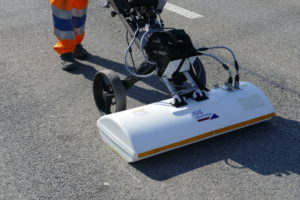
RIS Hi-BrigHT ground penetrating radar
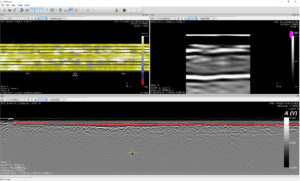
RIS Hi-BrigHT post-processing software GRED HD Bridge with scanning data
Leica iCON site software takes the design and the as-built model and looks at the difference between them – hence differential – calculating what needs to be removed to create the desired surface. The Leica iCON GPS 60 or GPS 70 smart antenna is used to work out the location of the milling machine and where it is in relation to the design. The Leica iCON site milling pilot app calculates the milling depth values and the cross slope at the position of the machine from the design differences. The app sends this information via the Leica iCON CC80 tablet to the Wirtgen machine controller which controls the hydraulic response on the machine.
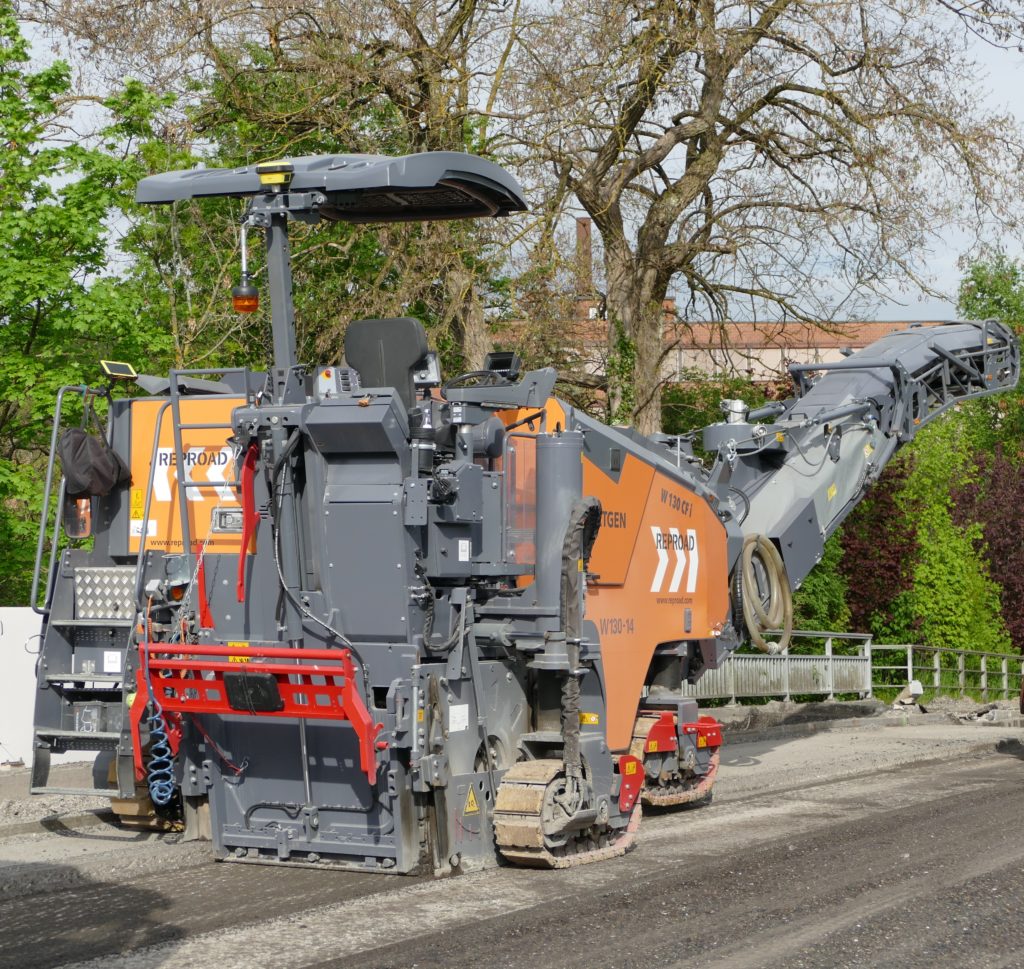
Leica iCON site automatic differential milling setup on a milling machine.
How to select the right 3D milling solution
Every situation and every site is different. While profile and differential milling can be used on any project instead of traditional milling to greatly improve accuracy and speed, there will be times when profile milling is a better solution and when differential milling is the best way to get the job done. Here are some examples of when to use each method.
Profile milling with MC1

Cost and profit are always factors in choosing between technologies. For companies who already own an MC1 machine control system and total stations, starting with profile milling makes economic sense – they can get more from an investment they have already made. Consistency in software design throughout all Leica Geosystems heavy machine control applications means that minimal training is required to use it for a new process; the same software platform can be used with different sensor configurations, which makes it easy to use and to scale up. Because it’s the proof of the two technologies, there is a wider variety of currently supported cold planers too.
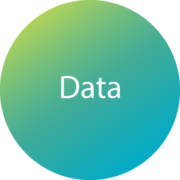
Profile milling uses data sent from a total station, which is the gold standard for precision, so it is ideal for major projects where quality assurance is critical. The total station also makes it a suitable method for areas with limited GNSS coverage, such as tunnels or dense urban areas.

Profile milling is also the ideal option when the road has to be milled in different stages. For example, the layers containing PAH (polycyclic aromatic hydrocarbon) need to be separated from the rest layers as they are treated differently during the recycling process and cannot be mixed. Profile milling, as it provides absolute height control, makes this practice feasible. In the case of the differential milling though, data collection should take place after the first layer is removed, so the new differential milling model can be calculated. This is a time-consuming task and many times even not possible, giving profile milling a great advantage in such cases.
Differential milling with iCON site

Again, for companies who already own the key components of the solution – iCON site software, a CC80 field controller and an iCG60 or iCG70 – using these for differential milling gives a good return on investment and better equipment utilisation. And if starting from scratch, differential milling is a lower investment than profile milling. Again, for companies who already own the key components of the solution – iCON site software, a CC80 field controller and an iCG60 or iCG70

For long stretches of road, differential milling is a faster method. For profile milling, the total station needs to be repositioned every 150 to 200m before it goes out of range, and leapfrogging needs to be planned for. In differential milling, the smart antenna works out the location of the milling machine and where it is in relation to the design using GNSS data. But, as mentioned earlier, the data collection for the reference design needs to be very precise and reliable in order to have a high quality and accurate differential milling, a task requiring additional equipment and time investment.
 Differential milling is also preferable for bridge projects. Bridges are affected by movements caused by the wind and traffic vibrations (if it remains partially open during the project). Also, as the material is removed from the surface, the bridge can get lighter and therefore rise few centimetres. With a GNSS sensor on the milling machine, the machine moves with the bridge, maintaining the accuracy of position and cutting depth required. The differential milling solution that relies on the specific difference on each point in the project, will not be affected by any swing or vertical change on the bridge deck while load deflection.
Differential milling is also preferable for bridge projects. Bridges are affected by movements caused by the wind and traffic vibrations (if it remains partially open during the project). Also, as the material is removed from the surface, the bridge can get lighter and therefore rise few centimetres. With a GNSS sensor on the milling machine, the machine moves with the bridge, maintaining the accuracy of position and cutting depth required. The differential milling solution that relies on the specific difference on each point in the project, will not be affected by any swing or vertical change on the bridge deck while load deflection.
For more information on Leica Geosystem’s milling solutions visit our product page or contact us for advice on the best method to use for your project. Additionally, you can download your free copy of the Leica Geosystems milling solutions White Paper for more information on compatibility, system components, and workflows.
 Matthias Schmidt
Matthias Schmidt
Senior Product Portfolio Manager
Machine Control Division
Leica Geosystems AG














